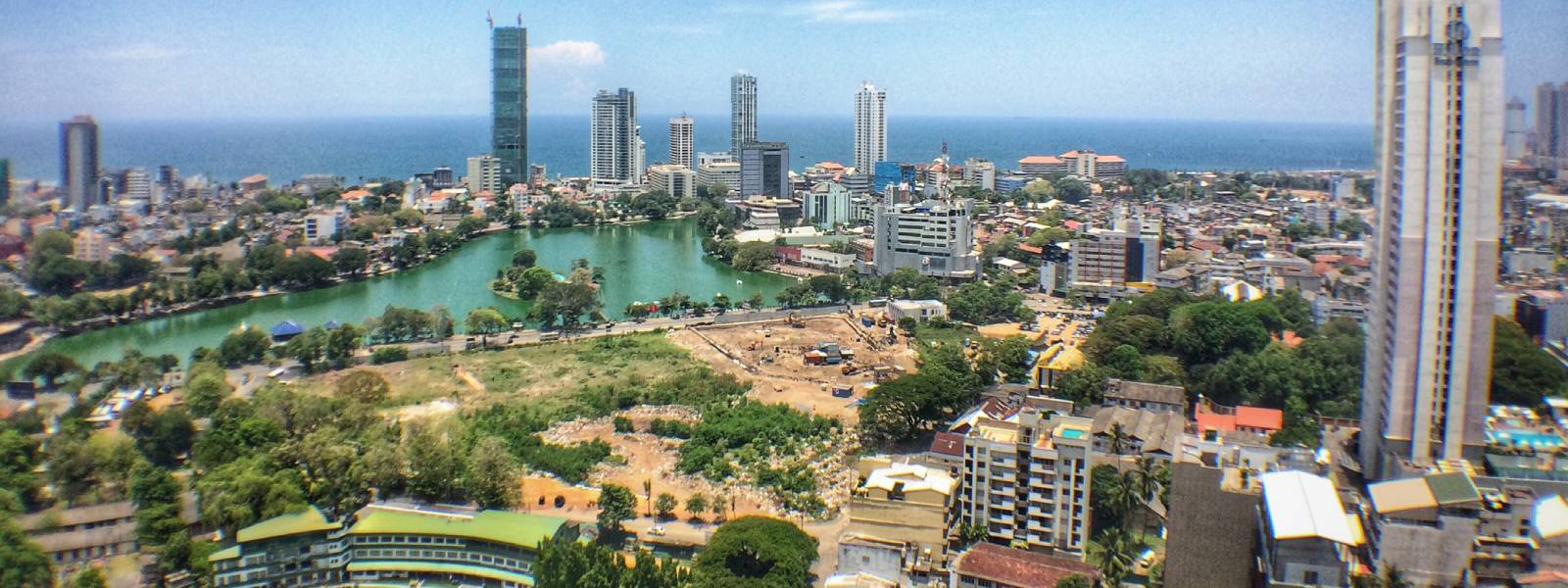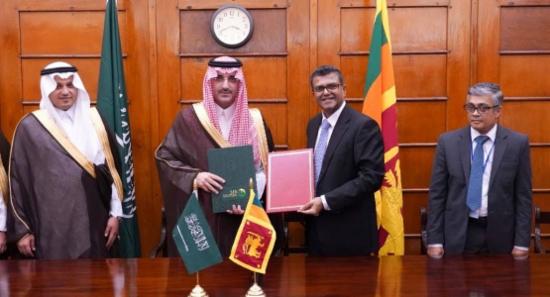.webp)

Fresh thinking in 'National Planning' the need of the hour
COLOMBO (News1st): Dr Vagisha Gunasekara, a senior lecturer in Social Studies at the Open University of Sri Lanka has made the call for an urgent rethinking of National Planning in Sri Lanka to one that goes beyond sustainable development goals (SDG)'s.
In a recently published essay released to the media, she noted that "the SDG's are well intended, but they severely undermine the local context and national priorities of national countries".
In 2015, all UN member countries adopted an SDG programme to end poverty, protect the planet and ensure that all people enjoy peace and prosperity by 2030, according to the global body.
However, the author stressed that Sri Lanka should centre its national plan mainly on improving the living standards of people, and protecting the environment.
"...the virus has given us another opportunity for us to reconfigure our economy and society," she said.
Dr Gunasekara pointed out that attention should be paid towards improving the living standards of those in the "periphery" of the economy as they make up around 70 percent of the total national workforce.
"If we manage to improve the periphery, the rest will inevitably fall into place," the article read.
The lecturer stressed the need for the South Asian island to invest heavily on sustainable agriculture, fisheries, and renewable energy, as natural resources have begun depleting in the country.
"Investing in renewable energy and creating economic to achieve a future free of fossil fuel ... will save us valuable foreign reserves and make us less reliant on other countries for essential goods," Dr Gunasekara wrote.
The full text of the article is as follows :
The COVID-19 is a public health crisis first and foremost, but the response to that crisis is raising questions with profound implications for how we organize our economy, society, and politics. First, it directly challenges ideas such as ‘global governance’ and international cooperation. Individual states, whatever form, or ideology they may espouse, are now in the driving seat, tackling the pandemic within their capacities. Coronavirus, in other words, have ‘brought back the state’ in a big way. Second, the virus is a reality check for all of us who could not think beyond the existence of a highly globalized economic system. Since the end of World War II, national economies rapidly got subsumed within a network of global supply chains based on an international division of labour. But restrictions on the movement of goods and people imposed by the pandemic has brought the interconnected world economy to a screeching halt. The virus has stopped us in our tracks and has forced us to seriously consider alternative models in the way we organize as economies and societies. Over time, Sri Lankan economy and society have succumbed to certain pathological conditions characterized by dependency on imported goods and Foreign Direct Investment (FDI), excessive consumerism and indebtedness, among other things. But the virus has given another opportunity for us to reconfigure our economy and society and come up with innovative ways to live and prosper. This article outlines the importance of national planning and proposes two main focuses for consideration: putting the ‘periphery’ and the environment at the centre of national planning in Sri Lanka. The disruption created by the COVID-19 pandemic has given an opportunity to bring back national planning in a way that is different to what is currently fashionable. Currently, the idea of planning is premised upon global governance and international cooperation that drive processes such as the Sustainable Development Goals (SDGs) of the United Nations development agenda. The SDGs are well-intended, but they severely undermine the local context and national priorities of developing countries. They also take existing global inequalities as a given and far from addressing injustices faced by developing nations as a result of unfair trading rules that work in favour of developed countries. The weakness of the global response to COVID-19 with the World Health Organization (WHO) which has come under scrutiny for its leadership, and policy agendas driven by international cooperation are losing legitimacy. In other words, after a period of progress towards global governance and regional integration in the late 20th and early 21st centuries, we seem to be heading back to a world where states have become the main players. In this context, re-evaluating national development priorities and moving towards a home-grown national planning model and a process has become imperative. Sri Lanka, in its recent post-independence history, had a golden era of national planning. The National Planning Secretariat was established in 1952 and the six-year plan of the government was developed by distinguished economists such as Gamani Corea. Subsequently, the National Planning Council was established in October 1956 and it was tasked with developing a plan to improve the living standards of people by making maximum use of the country’s available resources. As a result, a ten-year integrated national development programme (1959-1968) was prepared by the National Planning Council. In the 1950s and 1960s, a national development plan was a symbol of national sovereignty for newly independent states such as Sri Lanka. It was as important as the national flag or a constitution. Long-term national plans were inspired by the success of Soviet industrialization and economic growth after five-year plans started in 1928. The Soviet model was considered proof of the superiority of planned over free market economies. Another global factor that added to the credibility of national planning was the success of the Marshall Plan promoting post-war recovery in Western Europe. During this time, the World Bank was also a proponent of national economic planning (Blitzer, Clark & Taylor, 1975). The popularity of national planning waned over the 1970s. Critics of national planning pointed to the lack of political will or inadequate data and planning capacity as major issues. There was a gradual move towards substituting failing state structures for more efficient market mechanisms. The buzz word - “market failure” – that led to interventionist policies in the 1950s and 1960s, changed to “government failure” in the 1970s and 1980s. The most severe assault on national planning was launched in the early 1980s, as a component of Structural Adjustment promoted by the World Bank and the International Monetary Fund (IMF). The assault was directly on dismantling state planning structures, such as planning ministries and commissions that promoted it. The collapse of the Soviet bloc in 1989-1991 further cast doubts about the desirability of national development planning. Many national planning institutions were abolished or merged into ministries of finance where they became marginalized in terms of status, staffing, budget, and relevance to policy. This has been Sri Lanka’s planning trajectory. After the Open Economy reforms in 1977, national planning in Sri Lanka gradually took a backseat in the country’s affairs. And our country’s policies on trade, foreign relations and domestic production gradually became reactive, dependent on global patterns, and diktats of international institutions and donor countries. But in some countries, proactive national planning never went away. China, India, Viet Nam, and Malaysia continued to draw heavily from their national planning apparatus even as they eased into economic liberalization in later years. Jawaharlal Nehru, India’s first Prime Minister, saw “Five Year Plans” as vital to the implementation of his vision of a modernised and socialist India. India’s Planning Commission was established in 1950 and from 1951 onwards, the commission developed centrally designed economic and social programmes that were also implemented and evaluated by the same commission. The first national plan of independent India was aimed at addressing the needs of refugees (as a result of the Partition process), food shortages and rising inflation. Since then, the Planning Commission played a key role in steering India’s development journey. In 2015, in accordance with an announcement made by Prime Minister Modi, the Union Government established (National Institution for Transforming India) NITI Aayog as a replacement for the Planning Commission. The main task of NITI Aayog is to come up with policy innovations, leveraging India’s demographic dividend and other resources. It is also designed to address the slow and tardy implementation of policy, by strengthening inter-ministry coordination and communication between the central government and the states. In Viet Nam, following the death of Le Duan in April 1986, the country was facing enormous economic problems. Despite price controls on most goods and services, the annual rate of inflation was over 700%. Budget resources were strained because of high military expenditure and support provided to loss-making state-owned enterprises. During the Sixth Party Congress, a spirited debate on the need for major renovation (Doi Moi) led to a shift from centralised bureaucratic management based on state subsidies, to a multi-sector, market oriented economy with a role for the private sector to complete with the state in non-strategic sectors. The new system was a ‘mixed’ one that retained long standing national objectives of developing agriculture and increasing domestic production of consumer goods. Careful measures were taken to preserve structures such as the cooperatives, which, in later years, expanded beyond agriculture. The examples of India and Viet Nam show that these countries never stopped being proactive about national planning. Paying careful attention to changes within their countries and demographic and other changes in the world, they evolved in their thinking, practice, and organization always keeping the interests of the nation at the centre of the planning process. At this critical juncture imposed by the COVID-19 pandemic, as Sri Lankans we find ourselves at a crossroads, with an urgent need for proactive, long-term, and transformative national planning. One may argue that there is no deficiency of national planning in Sri Lanka because we have a plan and a policy for everything. It is true that over the decades, with every new political regime, numerous national plans have cropped up. But when political regimes change, the plans fall through the cracks, and new ones emerge. The pandemic has driven home the point that the way we were doing things in the past may not work in the future. What does ‘doing things differently’ mean for Sri Lanka? How do we snap out of dependency on imports, wean off the addiction to consumerism and debt? How do we become a nation of producers and innovators? This means that as a country, we must shift our focus on to two aspects: Putting the periphery first and protecting the environment. As separate articles are dedicated to each aspect, a lengthy elaboration will not be made here. Put briefly, the ‘periphery first’ idea simply means that our energies should be focussed on improving the living standards of people in the periphery of our current economic model. The ‘periphery’ is not meant in a simple geographic sense, though a large proportion of it consists of people living in rural areas. Those who face inimical challenges in securing livelihoods are the people of the periphery. They are the daily wage labourers, self-employed individuals who produce various goods that are sold in local markets, three-wheel drivers, factory workers on contract, temporary workers, farmers, fishermen, and labourers working in plantations, and the list continues. Most of our periphery is in the rapidly expanding informal economy, which now employs nearly 70% of Sri Lanka’s labour force. ‘Periphery first’ means improving the living standards and the wellbeing of Sri Lanka’s massive and rapidly expanding population segment who do not have secure livelihoods. They must be at the centre of national planning. If we manage to improve the periphery, the rest will invariably fall into place. Putting the environment at the centre of national planning is not new. Countries such as Costa Rica and Bhutan have led the way in adopting this approach and is currently experiencing phenomenal results. We have drilled or mined our way to growth, burned our way to prosperity and staunchly adhered to our faith in consumption without ever considering the consequences. In 2020, all resources are depleting before our eyes, and we are forced to think of alternatives that do not harm the air, water and nature that keep us alive. Investing in renewable energy and creating economies to achieve a future free of fossil fuel will not only improve our relationship with the environment, but also will save us valuable foreign reserves and make us less reliant on other countries for essential goods. Serious investment in sustainable agriculture and fisheries is equally crucial. Over time, we have become dependent on multinational companies for fertilizer, seeds, machinery, and all other inputs of agricultural production. Our addiction to these imports has not only built a vicious political economy that constantly squeezes farmers, but have polluted our waterways, destroyed our ecosystems, and hindered the health of thousands of people. To conclude, the virus has given us a reason to re-programme our national development priorities. The points for consideration are for a national plan which has the ‘periphery’ and the environment at its centre, and to establish a national planning apparatus directly under the President of Sri Lanka, with powers to formulate, advise, implement and monitor national plans.Other Articles
Featured News





.png )











-797273_550x300.jpg)


















.gif)